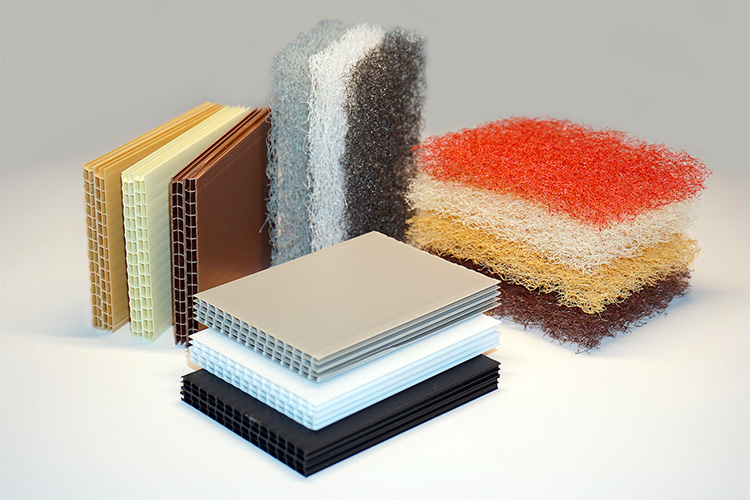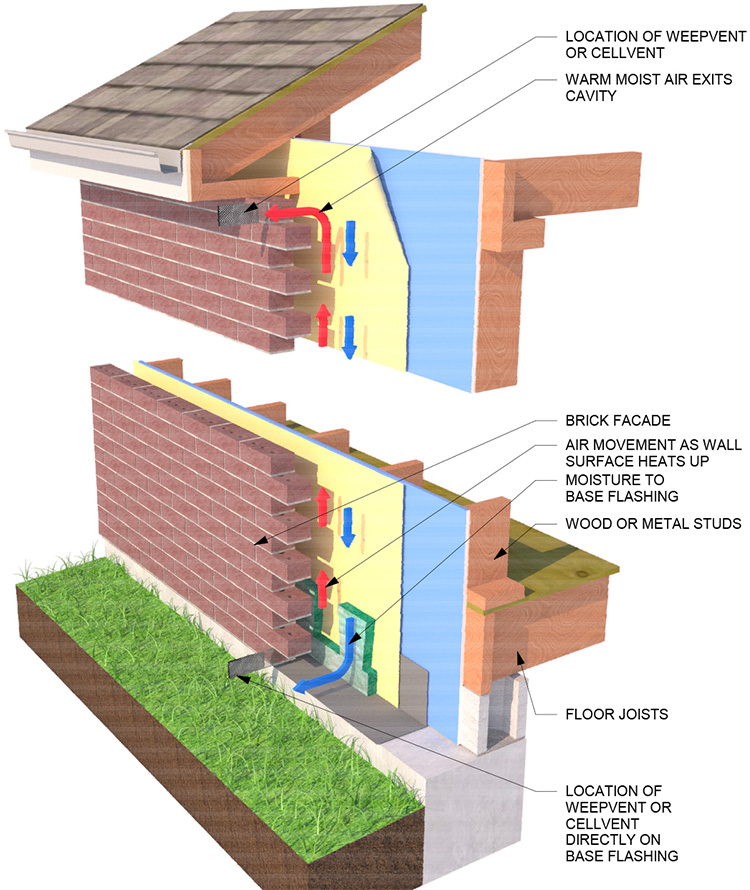Ventilating the top and bottom of a cavity wall
October 27, 2021
Weep Vents are commonly placed directly on the flashing at the bottom of the wall, below finished floor and above finished grade. What may be new to some is that now, it is becoming more common to also place weep vents at the top of the wall, either just below the shelf angle (commercial or multi-story) or just below the facia and soffit of a residential structure.
The reason for this is increased drying and ventilation.As the air in the cavity heats up during the day because of sunlight and warm temperatures on the façade, the moisture in the cavity tends to go from water droplets to vapor as the evaporation process takes place. As the warm air rises in the cavity, the weep vent at the top of the cavity allows the moist air to exit and increase drying and evaporation performance in the wall. Different elevations on the structure will dry at different rates, but typically so will water retention on the various walls, so it works well overall.
The spacing of the weep vents at the top of the wall can match the spacing at the bottom of the wall. Typically, the maximum spacing allowed for weep vents anywhere in the United States is 33 inches, but we recommend proper spacing should fall in the 16-inch to 24-inch range. If for some reason your material will not allow for such spacing due to a large dimensional footprint, it is recommended to weep in the bed joint below the base material directly on the base flashing at properly spaced increments.
For technical related questions, please email [email protected] or call 219-850-4514.
@MortarNet #MortarNet #masonry #construction #WeepVents
Company: Mortar Net Solutions®
Of: Steven Fechino
Source: https://mortarnet.com/ventilating-the-top-and-bottom-of-a-cavity-wall/
Tags:
Construction
Masonry
Ventilating the top and bottom of a cavity wall (August 4, 2021), Rib Rock Landscape Block Provides Time and Costs Savings with Tightened Construction Schedule (December 9, 2020), Concrete Masonry Meets Historic Design Requirements at a Cost-Effective Price (October 21, 2020), Heritage Collection™ Designer Concrete Brick Offers Value and Design Versatility for New Home Construction (May 25, 2020), Masonry Stain (August 14, 2019), Importance of a Well-Drained Masonry Wall (November 1, 2018), Paint vs. Stain: know the difference (April 6, 2018), Brick Stairways (November 20, 2017), Special Brick Shapes (October 3, 2017), Top Interior Design Ideas with Masonry Veneers (September 19, 2017)
Ventilation
Ventilating the top and bottom of a cavity wall (August 4, 2021), How 3D Printing is Helping the Coronavirus Cause (July 2, 2021), The Daylighting Difference: Restaurants (June 23, 2021), The EconoSpan® louver and screen system is ideal for roof top equipment screening or other applications with large areas requiring concealment and ventilation (April 30, 2021), What are the Steps for Creating a Dynamic Wall? (April 14, 2021), STC or OITC? How to select the proper sound rating for automatic smoke vents (February 3, 2021), New Advanced Thermal Dispersion Airflow Measurement System Flyer (November 20, 2019), Benefits of specifying complete masonry veneer wall systems (January 23, 2019)



